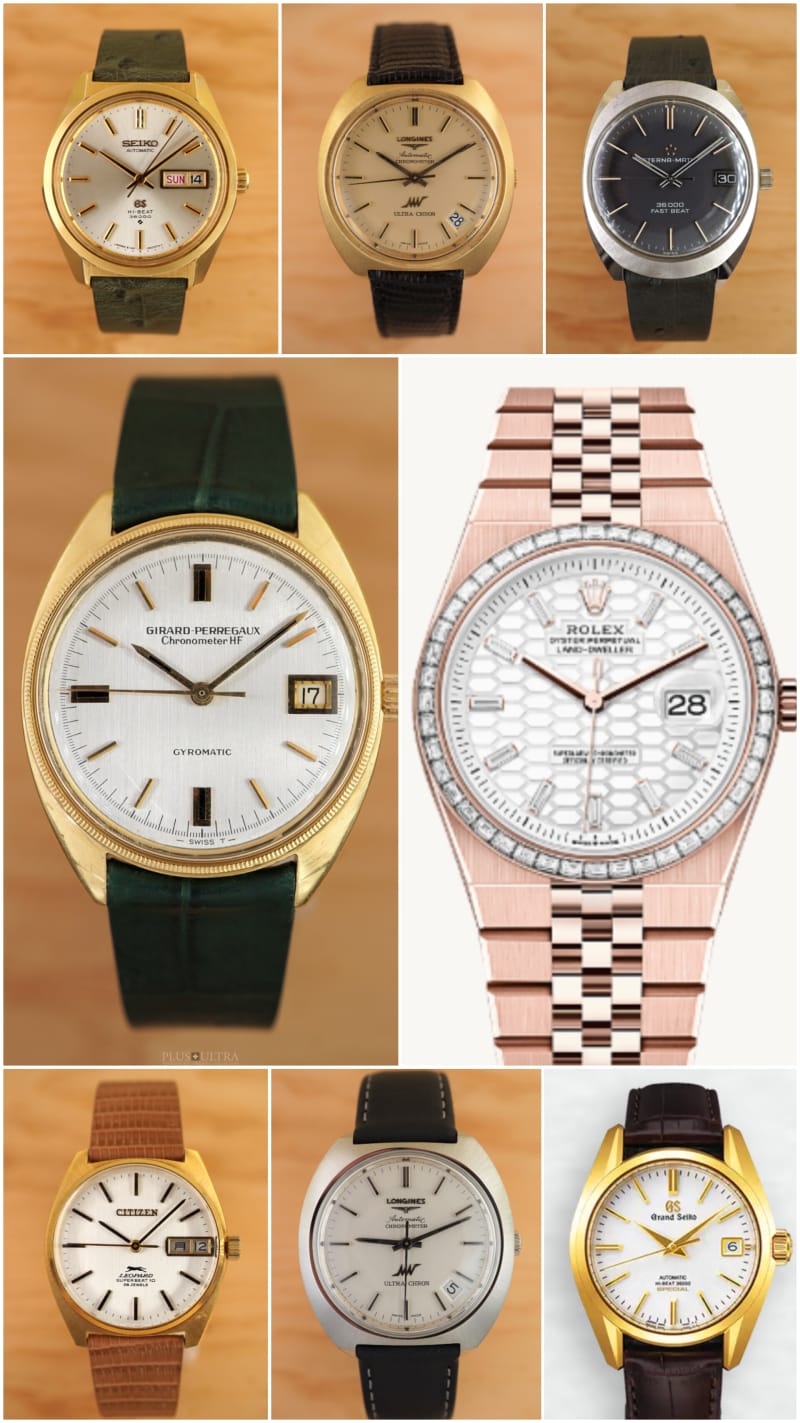The reaction of the industry with their mechanical watch-movements against the uprising electronic-movements (Accutron cal214-tuningfork, 1961ff.: *klikk) and their superior precision was the Race to Hi-Beat. Since the mid-60s several brands were innovating towards 36'000 bph / 5Hz and in 1966 it was Girard Perregaux with their GyroMatic 32A-movement that won this competition: *klikk. But Seiko was close and Zenith, Longines, Citizen, Eterna, Ulysse Nardin and others also presented their fast-beating mechanical movements in the late 1960s and early 1970s -- an important mechanical achievement, that came with some disadvantages: faster wear and tear, higher usage and shorter service intervals due to significantly increased stress on the mechanical parts. So it didnt prevail.
And it is also needless to say it was a lost fight for precision from the start: neither with 3Hz or 4Hz nor even with 5Hz the precision of the tuningfork- and especially quartz-movements could be reached by the mechanicals -- but that is of course easy to say in hindsight. During this decade (1961 - 1971) it was a serious competition and an approach to keep the century-long used main parole of watchmaking in the realm of mechanics: "Watchmaking is Foremost About Precision". This makes them important artefacts of a certain and revolutionary era in horology and next to that they are rare and become rarer: in 18K-gold (and even a special Eterna in whitegold).
And indeed, high beating-mechanicals came a bit out of fashion for 50y, but lately this rate of 36'000bph or 5Hz came back in the fairway of significantly improved materials and production-precision to counter the increased stress on the mechanics: in 2025 Rolex presented their Land-Dweller with the cal7135 beating at exactly this rate. And so it is next to Rolex especially Seiko with their 2018-presented (!sic) cal9S85 using this high frequency, that makes the seconds-hand almost sweep so beautifully.
Photos: own, Rolex-website & Grand Seiko-website;
